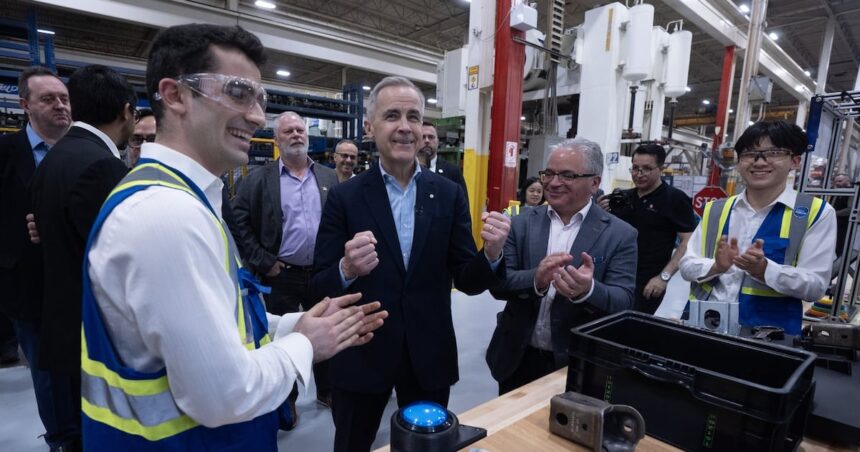In a pivotal meeting that could reshape Canada’s electric vehicle landscape, automotive industry leaders emerged with cautious optimism following discussions with Mark Carney, co-chair of the federal government’s Net-Zero Advisory Body. The talks, held amid mounting industry pressure, centered on potential adjustments to the ambitious electric vehicle sales mandate that has generated significant tension between manufacturers and policymakers.
“We had a productive exchange with Mr. Carney about the practical challenges of meeting these targets,” said Brian Kingston, president of the Canadian Vehicle Manufacturers’ Association, in an exclusive interview. “While we support the transition to zero-emission vehicles, the current timeline creates substantial hurdles for both manufacturers and consumers that cannot be overlooked.”
The federal mandate, a cornerstone of Canada’s climate strategy, requires automakers to ensure 20 percent of their new vehicle sales are zero-emission by 2026, escalating to 60 percent by 2030 and reaching 100 percent by 2035. These targets have faced growing resistance from industry stakeholders who argue the approach fails to account for market realities and consumer readiness.
Kingston emphasized that the industry isn’t seeking to abandon environmental goals but rather to implement a more realistic framework. “We’ve presented concrete data showing the gap between policy ambitions and market conditions,” he noted. “The current EV adoption rate stands at approximately 10 percent of new vehicle sales, highlighting the significant acceleration needed to meet the 2026 target.”
The meeting follows months of intensifying dialogue between automakers and the federal government. Last November, major manufacturers including General Motors, Stellantis, and Ford issued a joint statement warning that the rigid mandate could lead to vehicle shortages and economic repercussions for the Canadian automotive sector.
Industry analysts point to several critical barriers impeding faster EV adoption, including charging infrastructure gaps, battery mineral supply constraints, and persistent consumer concerns about range and affordability. A recent survey by J.D. Power revealed that price premiums and charging anxiety remain the top deterrents for potential EV buyers across North America.
Tim Reuss, president of the Canadian Automobile Dealers Association, who also participated in the discussions, highlighted the perspective of dealerships. “Our members are on the frontlines of this transition, and they’re reporting significant inventory challenges. Customers want electric vehicles, but the premium pricing and infrastructure concerns create hesitation that cannot be legislated away.”
The federal government has maintained that the targets are necessary to meet Canada’s climate commitments and position the country’s automotive industry competitively in a rapidly evolving global market. Environment Minister Steven Guilbeault previously stated that the mandate includes flexibility mechanisms to address industry concerns, though specifics remain under discussion.
Carney, a former Bank of Canada governor with significant influence in climate policy circles, reportedly acknowledged the industry’s concerns while reiterating the importance of maintaining ambitious targets. Sources close to the discussions indicated that potential adjustments might include modified interim targets or enhanced incentive programs rather than wholesale changes to the 2035 endpoint.
The stakes extend beyond environmental policy into the realm of economic strategy. Canada’s automotive sector employs approximately 500,000 workers and contributes over $12 billion annually to the national economy. Industry representatives argue that an overly aggressive mandate could push production to jurisdictions with more flexible policies, particularly given the integrated nature of the North American automotive market.
As negotiations continue, both sides appear to recognize the need for compromise. “We’re not questioning the destination,” Kingston clarified. “We’re discussing the most effective and least disruptive path to get there.”
The question now facing policymakers and industry leaders alike is whether Canada can strike the delicate balance between environmental ambition and economic pragmatism in its approach to the electric vehicle transition. Can we accelerate toward a zero-emission future without leaving consumers and manufacturers stranded along the way?










